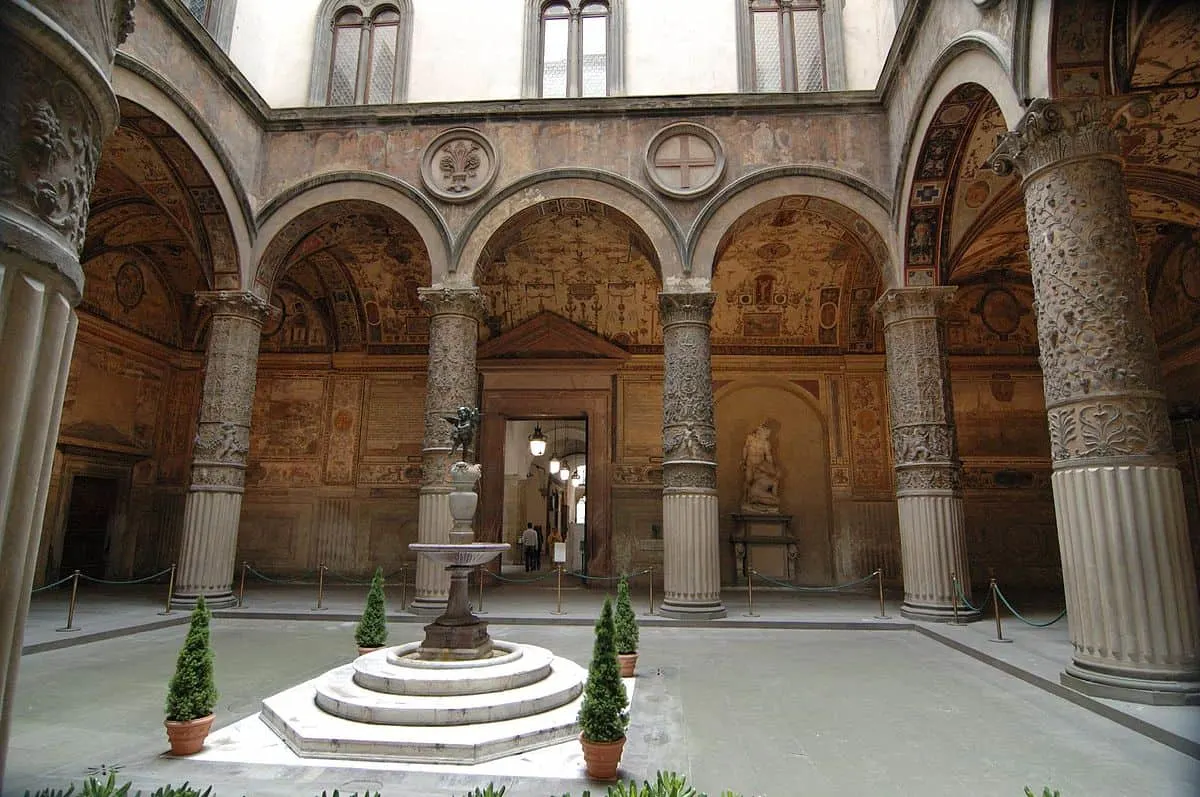One of the most amazing town halls in the world can be found in Italy.
In this post, you’ll discover the ultimate list of facts about the Palazzo Vecchio, a historical landmark in the city of Florence.
1. It’s located in the heart of the city of Florence
The Palazzo Vecchio, which translates to the “Old Palace” is the town hall of Florence, the capital of the Tuscany Region in Central Italy. The original structure was constructed between 1298 and 1314 and multiple additions were made in the 15th and 16th centuries.
It’s located on the Piazza della Signoria, the most popular square in Florence and the historical heart of the city. The tower of the Palazzo Vecchio stands about 94 meters (308 feet) tall and is together with the magnificent dome of Florence Cathedral one of the most prominent landmarks in the city.

2. The building used to have several other names
When the Palazzo Vecchio was completed in the early 14th century, it was referred to as the “Palazzo della Signoria.” The “Signoria of Florence” was the name of the government of the Florence Republic between 1250 and 1532.
The history of buildings on the site goes back to Roman times, though, as it used to be the site of the theater of the Roman colony of Florentia, built in the first century A.D.
The current structure was built on top of the demolished “Palazzo dei Fanti” and “Palazzo dell’Esecutore di Giustizia,” once owned by the Uberti Family. This family was believed to have ties to Rome at the time and according to the 14th-century “Nuova Cronica,” the palace was constructed to ensure that the Uberti family homes would never be rebuilt on the same location.
it was also constructed to emphasize the power of the Florence Government at the time. The name of the palace was eventually changed to the “Palazzo del Popolo,” “Palazzo dei Priori,” and “Palazzo Ducale,” referring to the functions it had at that particular time in history.
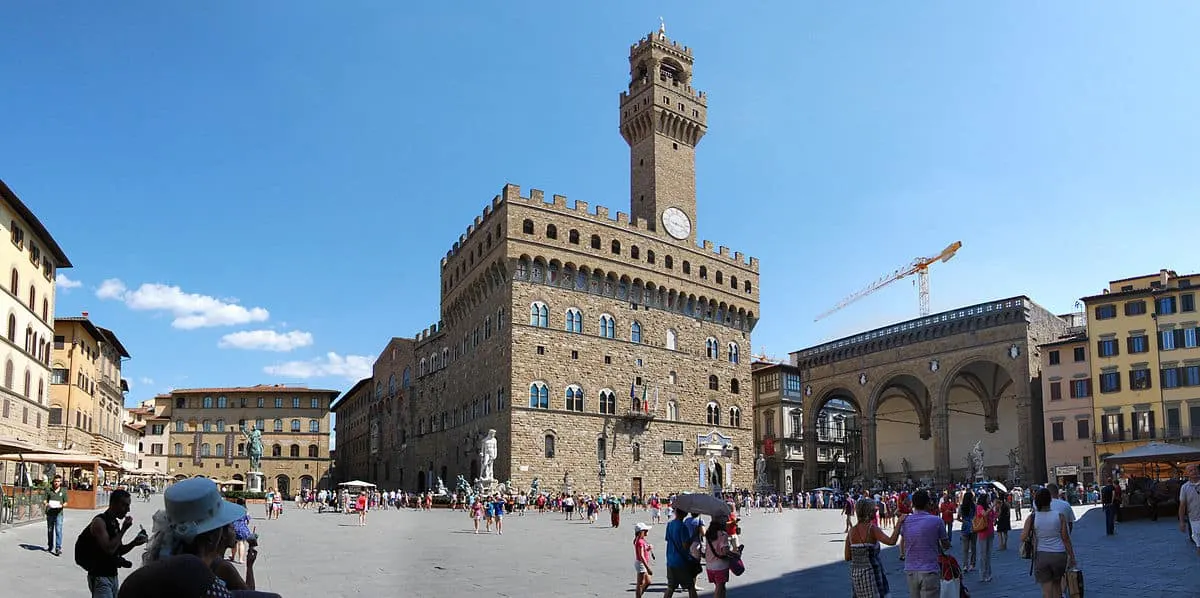
3. A powerful Florence family used to live here
Even though the building has mostly been used for government and religious purposes, it was also used to serve as the residence of the rulers of the city, the Medici Family. Duke Cosimo I de’ Medici moved into the palace in the year 1540.
When the redesigns of the Pitti Palace were completed, he moved across the Arno River and referred to his old residence as the “Palazzo Vecchio,” which is the name that stuck and the reason it’s called this way today.

4. There’s a tunnel running from the old to the new palace
The Duke’s old residence was just a short distance away from the Ponte Vecchio, one of the most iconic bridges in the world, and right across from the Pitti Palace on the opposite bank of the Arno River.
This means you can simply walk there, and that’s what the Duke frequently did. One of the most fascinating facts about the Palazzo Vecchio is that Cosimo didn’t have to walk the streets of Florence to go from one palace to the other, he could use a private corridor referred to as the “Vasari Corridor,” named after its designer Giorgio Vasari.
This enclosed passageway, runs all the way from the Pitti Palace, on top of the Ponte Vecchio, on top of rows of houses, all the way to the Palazzo Vecchio on the other side of the river.
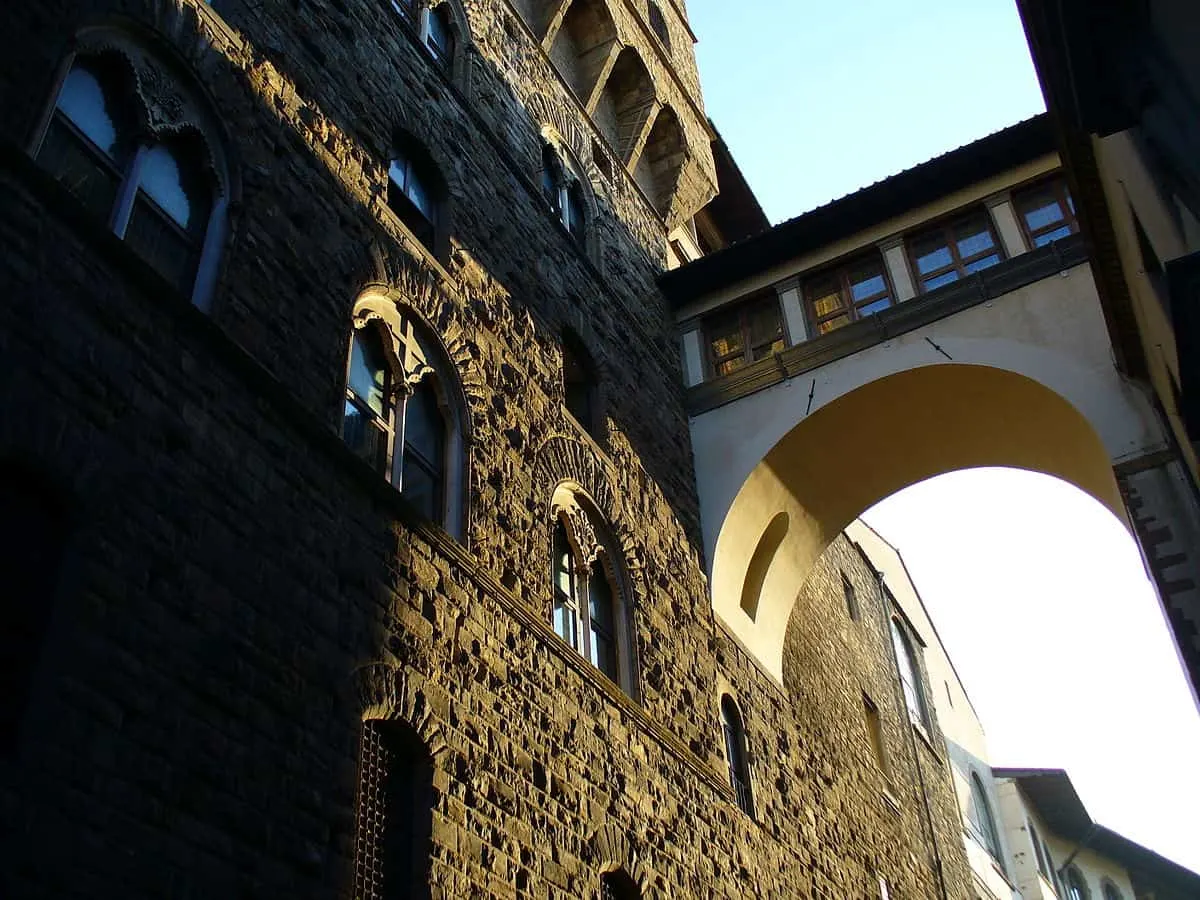
5. The building was designed by a renowned architect
The building is one of the most iconic structures in the city because of its crenelated tower and its typical Florentine Gothic design. The architect of the building was Arnolfo di Cambio (1240-1310), an Italian architect, and sculptor who is most famously known for the original design of Florence Cathedral.
The crenellations weren’t merely decorative elements as well. This is proven by the fact that the arches below them have embrasures integrated, a common feature of medieval castles which allowed defenders to pour hot liquid or stones on intruders from above.
This again emphasizes that the Palazzo was both a representation of the city’s importance and a stronghold in case things turned bad.
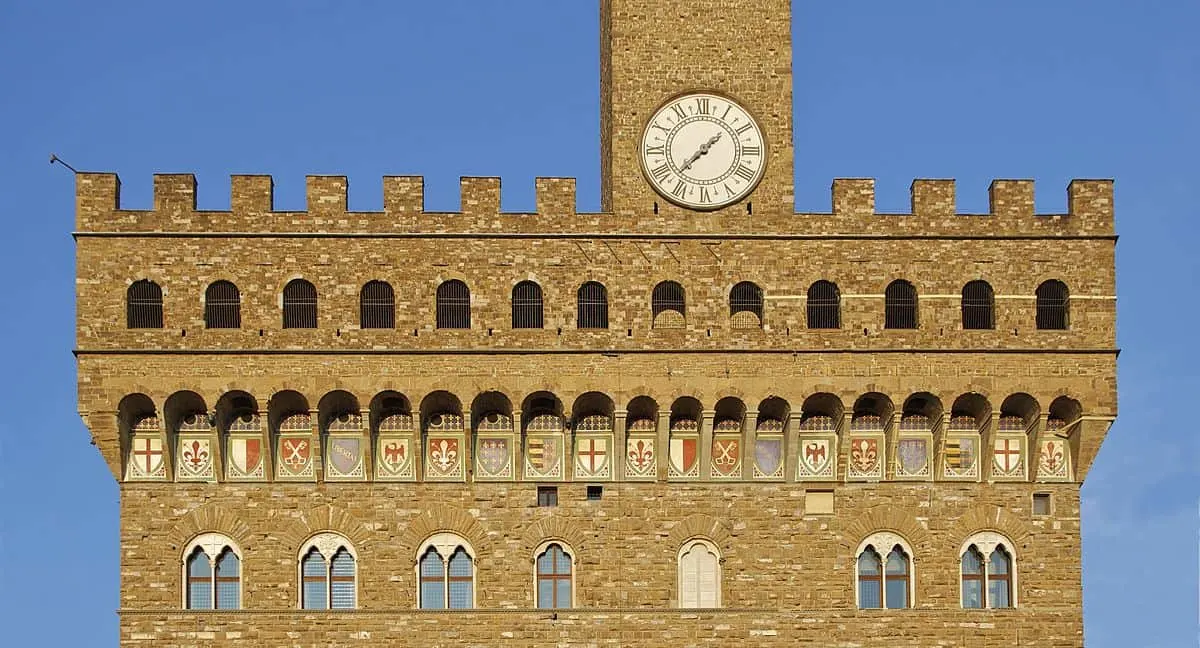
6. There’s a reason why the building’s tower isn’t centered
Perhaps you already noticed but the tower of the building isn’t exactly located in the center of it. This wasn’t a mistake by the reputable architect of the building but something that was unavoidable.
Di Cambio integrated an older tower that was still standing in this location into the design of the new tower. This ancient tower was once owned by the Foraboschi family and was referred to as “La Vacca” or “The Cow.”
The new tower was named after Arnolfo di Cambio and is referred to as the “Torre d’Arnolfo.”
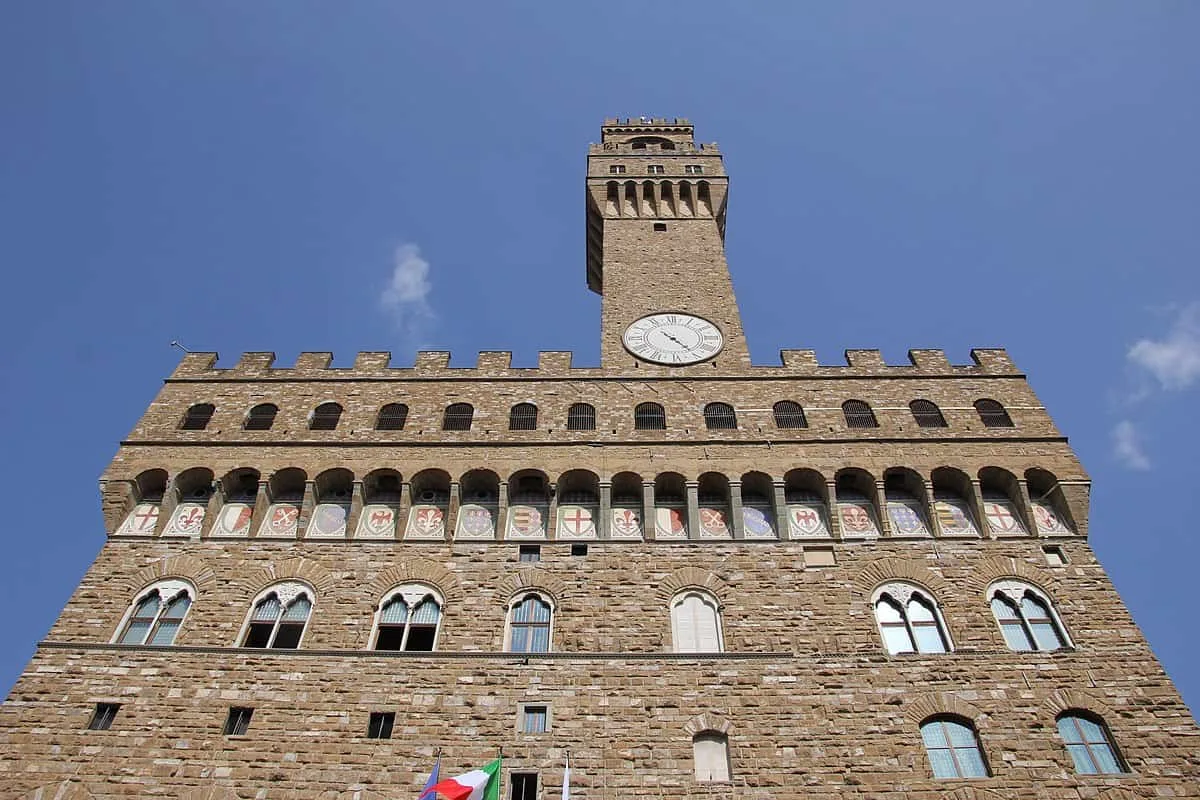
7. The clock tower once held two famous prisoners
Perhaps one of the most intriguing facts about the Palazzo Vecchio is that the tower also houses 2 cells, both of which have been inhabited by some of the most infamous prisoners in Florence.
First, the honor of being imprisoned in a small cell in this tower was Cosimo de’ Medici (1389-1464), referred to as “The Elder” or “Father of the Fatherland.” He was jailed in 1435 because of his failure to conquer the Republic of Lucca but managed to turn his sentence into exile.
The second prisoner was Girolamo Savonarola and he was much less fortunate. The fanatical Italian Dominican friar was jailed in 1498 and he managed to make the church angry. They responded by hanging him, along with 2 of his followers, on the main square, and burning them to death, right in front of the Palazzo Vecchio.
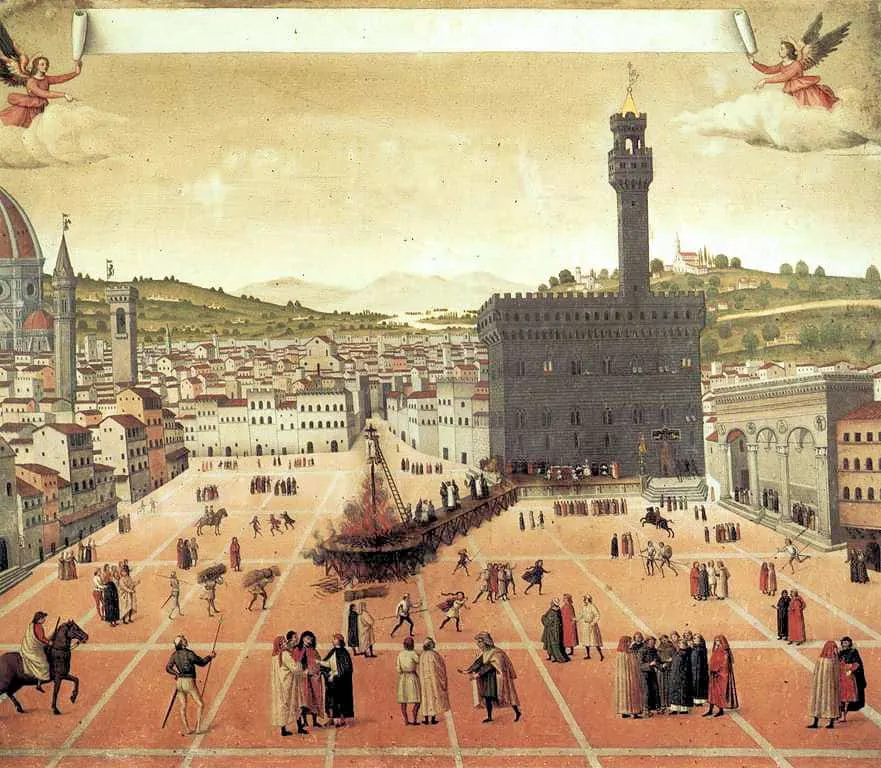
8. The tower’s clock isn’t the original 14th-century one
The original clock of the tower was built in the year 1353 by a local Florentine named Nicolò Bernardo. This clock hung there for several centuries until it was replaced in the 17th century.
The current clock was put into position in the year 1667 and is a replica manufactured by a German clockmaker from the city of Augsburg named Georg Lederle. It was installed by Italian scientist Vincenzo Viviani, a disciple of Galileo.
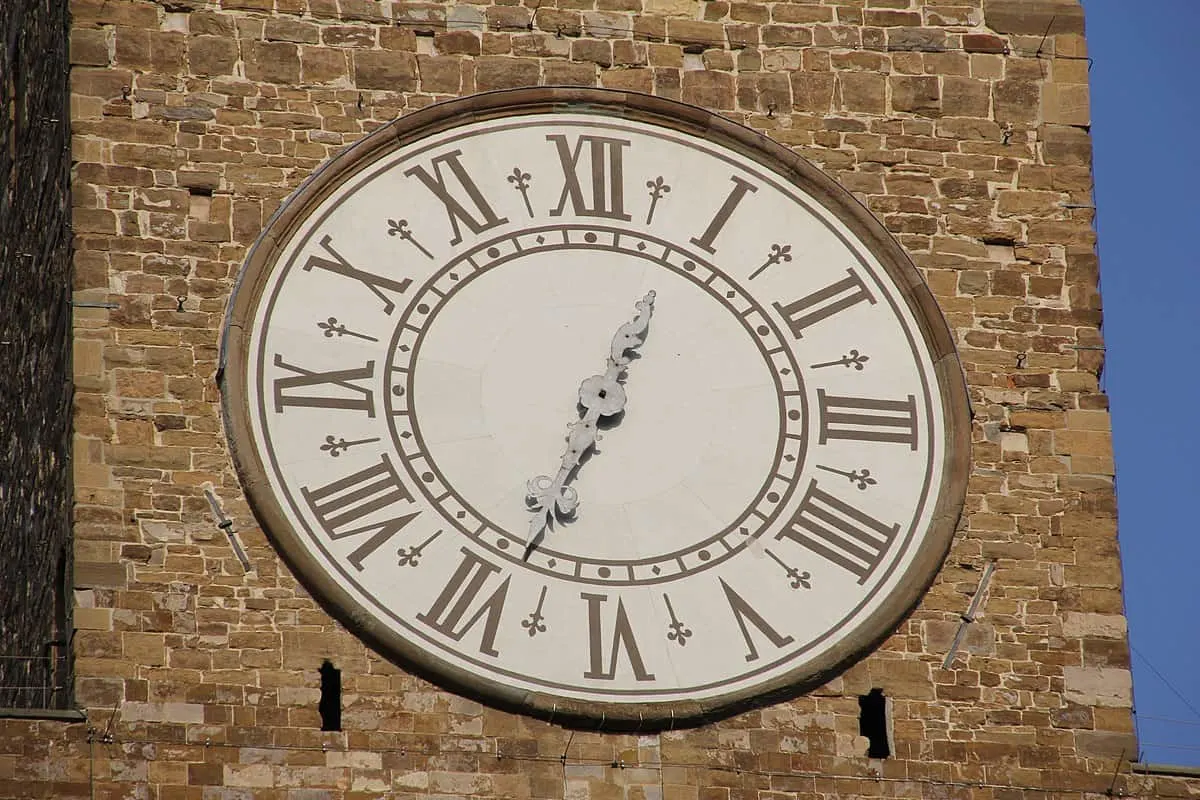
9. The palace became Italy’s most important building in the 19th century
Halfway through the 1860s, Florence became the temporary capital of the Kingdom of Italy. This means that the Palazzo Vecchio instantly became one of the most important buildings in Italy between 1865 and 1871.
The building was perfectly suited for this function as it featured a large meeting hall referred to as the “Salone dei Cinquecento,” which translates to the “Hall of the Five Hundred.”
This hall has a length of 52 meters (170 feet) and a width of 23 meters (75 feet), making it the largest room in the building. It was originally commissioned and built in the year 1494 by Girolamo Savonarola to host the Grand Council (Consiglio Maggiore) which consisted of 500 members.
Yes, this is the man who would end up being burned alive right in front of it 4 years later!
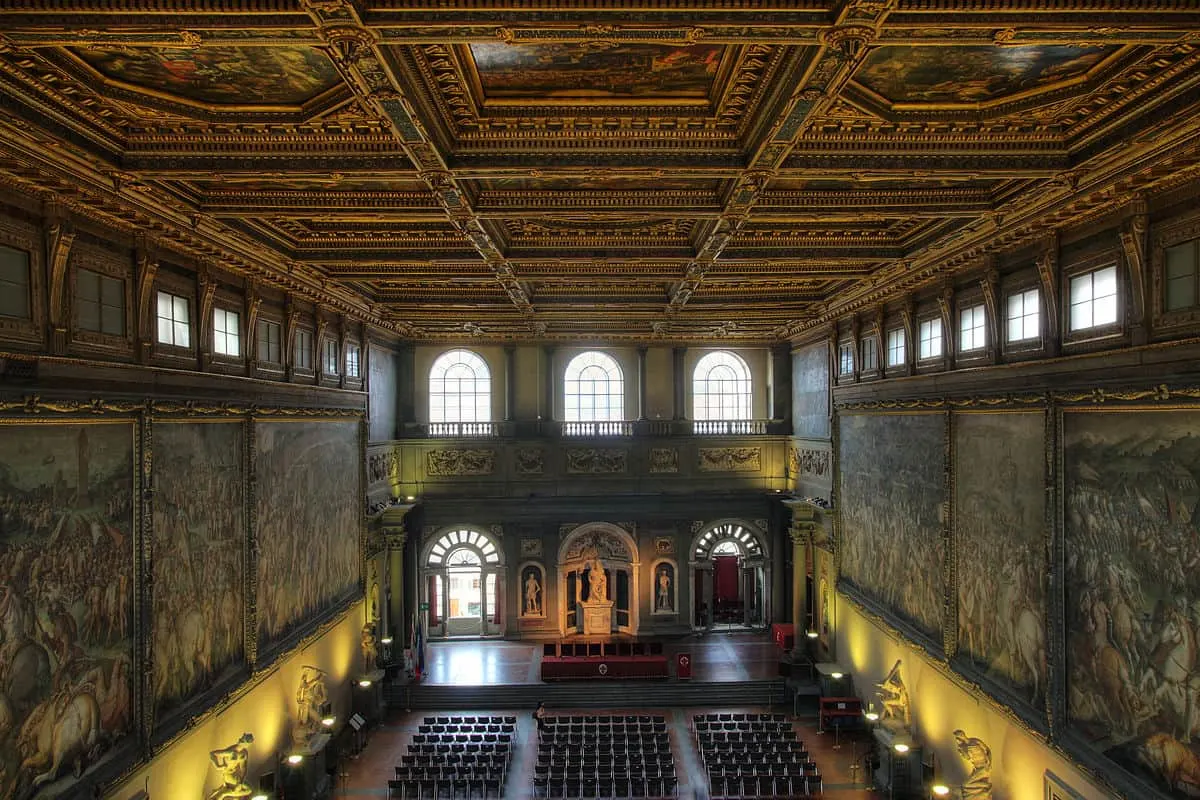
10. A da Vinci fresco was destroyed in the meeting hall
One of the most interesting facts about the Palazzo Vecchio is that the walls of this large meeting hall were supposed to be decorated with paintings of the most famous Renaissance artists in the World, Leonardo da Vinci, and Michelangelo.
Michelangelo was never able to complete his commission as he moved to Rome to work for Pope Julius II, and da Vinci made a crucial mistake which resulted in his fresco being destroyed.
The mistake by da Vinci is especially painful because he actually for once completed a commission (he didn’t complete that many of his works), especially because it was unnecessary.
Just like with his Last Supper painting, he experimented with this fresco which was called “the Battle of Anghiari” and depicted a famous Florentine victory. Because of this, the paint didn’t dry fast enough and he brought in small stoves to heat the paint in an attempt to make it dry faster.
The result was the paint melting because of the extreme heat and ending up in puddles on the floor. Gone was his masterpiece!

11. A world-famous statue decorated the entrance for 100’s of years
Between 1501 and 1504, Michelangelo sculpted one of the most famous Renaissance statues in history called “David.” It was intended to decorate the roof of Florence Cathedral but was deemed way too heavy to be lifted in that position.
David was eventually placed right in front of the entrance door, flanked by Baccio Bandinelli’s Hercules and Cacus (1525–1534). It stood here from 1504 until it was finally moved into the Accademia Gallery, an art museum in Florence, in 1883.
In 1910, a replica of the statue was placed in the exact position that the original used to stand.
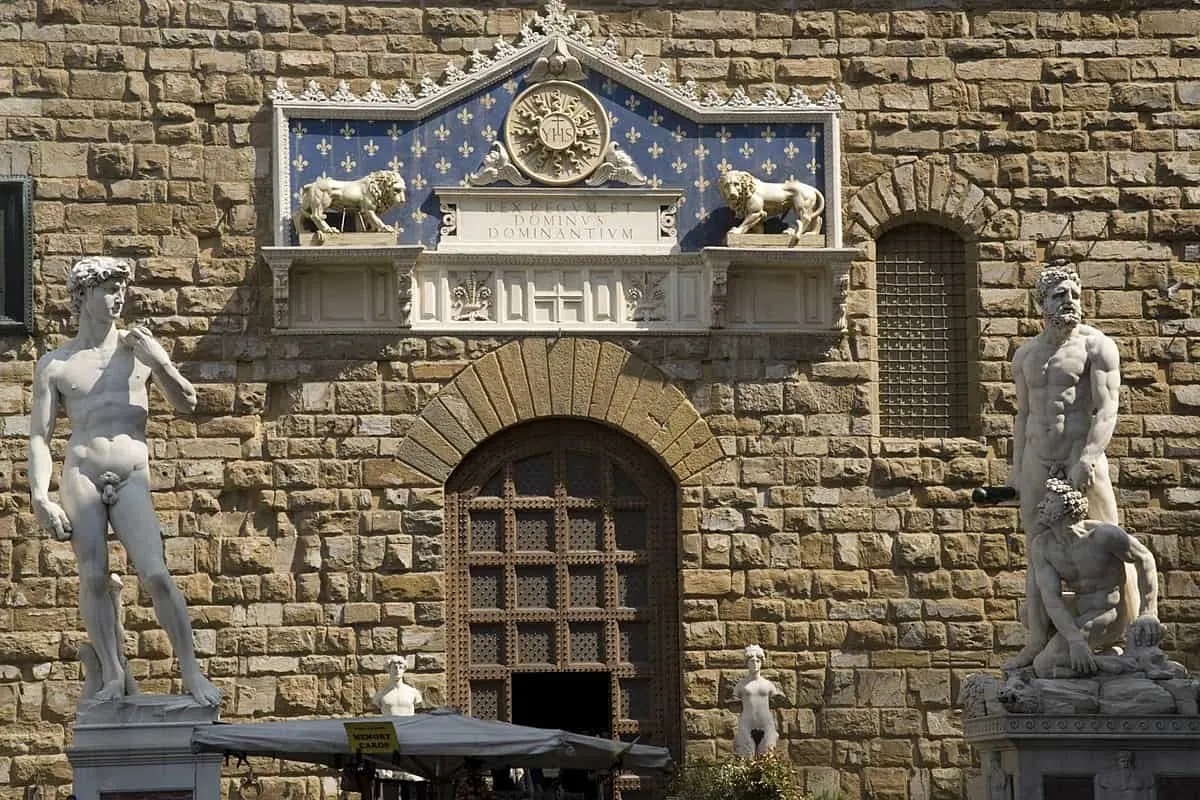
12. The palace is now a museum that contains numerous famous works of art
The Palazzo Vecchio is now a famous museum in the city of Florence, even though it still has a practical function as well as the office of the Mayor of Florence and the seat of the City Council.
The palace has 3 courtyards which are decorated with sculptures and pillars. The main courtyard was designed by Italian architect Michelozzo and dates back to the year 1454.
The building also consists of numerous halls and rooms which are elaborately decorated with frescos and paintings from some of the most renowned painters in history, and ceilings that literally make you stand in awe.
